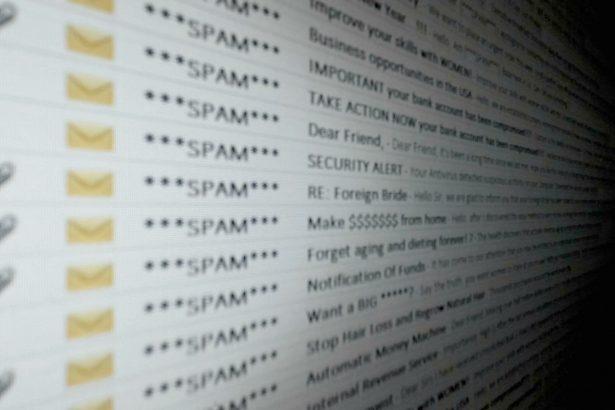Cybercriminals are circulating a dangerous “Update To Your Account Was Requested” phishing email. Disguised as a legitimate security notification, it prompts you to verify a fabricated request. However, this is a classic tactic to trick you into entering credentials into a fake portal—ultimately aiding identity theft and financial fraud.
Threat Overview
This is an email scam—specifically a phishing campaign using social engineering to steal email account credentials or other personal data.
| Attribute | Details |
|---|---|
| Threat type | Email scam, Phishing, Social Engineering |
| Associated email addresses | Varies—fraudulent, often spoofed as official |
| Detection names | Detectable by typical anti-phishing filters |
| Symptoms of infection | Unauthorized account access, unusual password resets |
| Damage & distribution | Identity theft, financial loss, credential harvesting via deceptive email links |
| Danger level | High |
| Removal tool | SpyHunter – Download here |
Scam Details
The email pretends you requested an account update at a specific date and time. It then instructs you to verify a one-time code or click “Review Changes” to confirm. These prompts link to a phishing site mimicking a legitimate login page.
If you unknowingly provide credentials, attackers compromise your email—potentially launching further scams or taking over linked accounts.
Email Text Example
From the “Update To Your Account Was Requested” phishing sample:
Subject: Email Notification
Hello ********,
An update to your account ******** was requested at 22 July, 2025,10:09:37 AM. To ensure you made this request, we need to verify your email before making any changes.
Here is a one time verification code: 2Yr6Q8
If you did not attempt to make changes to your account, please log in to your account to rectify this immediately.
Click the button below to review changes to your account ********
Review Changes To ********
Learn more about keeping your account secure.
© 2024. All Rights Reserved.
Threat Analysis
How I Got Infected
Attackers cast a wide net with this phishing email. It may bypass spam filters if the email is cleverly formatted or spoofed. If you receive a generic-sounding but “urgent” message, it may prompt panic, causing you to click without much thought.
What It Does
Once you click the link, you’re taken to a fake login page. Any entered credentials get harvested, giving the attacker access to your account. These credentials are often used to extract sensitive data, impersonate you, or launch additional phishing campaigns.
Should You Be Worried?
Yes—this scam is serious. Email accounts are gateways to other sensitive services: banking, social profiles, work emails, cloud storage, and more. A compromised email can lead to password resets, data theft, and identity fraud. With this scam’s urgency and apparent legitimacy, it poses high risk.
Manual Removal Guide: How to Identify and Remove Email Scams Yourself
Step 1: Recognizing Scam Emails
Before taking action, learn to identify email scams. Some common red flags include:
- Unknown Sender: Emails from unfamiliar addresses, especially if they claim to be from banks, tech support, or government agencies.
- Urgent or Threatening Language: Messages pressuring you to act quickly (e.g., “Your account will be suspended!”).
- Poor Grammar & Spelling Mistakes: Many scam emails contain grammatical errors.
- Suspicious Links or Attachments: Hover over links to check if they lead to an unusual website before clicking.
- Requests for Personal or Financial Information: Legitimate companies will never ask for sensitive details via email.
Step 2: Avoid Interacting with Scam Emails
If an email appears suspicious:
- Do NOT click on any links.
- Do NOT download attachments.
- Do NOT reply to the sender.
Step 3: Report the Email Scam
Reporting scam emails helps prevent others from falling victim to them:
- Gmail/Outlook/Yahoo Users: Click “Report Phishing” or “Report Spam” in your email client.
- FTC (U.S. users): Report scams to the FTC Complaint Assistant.
- Google Safe Browsing: Report phishing sites at Google’s Phishing Report.
Step 4: Block the Sender
To prevent further scam emails from the same sender:
- Gmail: Open the email, click the three dots, and select “Block [Sender Name]”.
- Outlook: Open the email, select “Junk” > “Block Sender”.
- Yahoo Mail: Click “More” > “Block Sender”.
Step 5: Check Your Accounts for Compromise
If you’ve interacted with a scam email:
- Change your passwords immediately. Use strong, unique passwords.
- Enable Two-Factor Authentication (2FA). Adds an extra security layer.
- Monitor your banking transactions for suspicious activity.
Step 6: Scan Your Device for Malware
If you accidentally clicked a link or downloaded a file, scan your system for malware:
- Windows Users (Windows Defender)
- Go to Settings > Update & Security > Windows Security > Virus & Threat Protection.
- Click “Quick Scan” or “Full Scan”.
- Mac Users
- Use security software like Malwarebytes for Mac to scan for threats.
Step 7: Strengthen Email Security
- Enable spam filtering in your email provider’s settings.
- Use a third-party spam filter such as Spamihilator or Mailwasher.
- Stay educated on phishing techniques to avoid falling for scams in the future.
SpyHunter Removal Guide: Automated Solution for Email Scam Threats
SpyHunter is a powerful anti-malware tool designed to detect and remove phishing-related threats, Trojans, spyware, and other cyber threats. If you prefer a quick and automated solution, follow these steps:
Step 1: Download SpyHunter
- Visit the official SpyHunter download page: Download SpyHunter
- Click “Download” and save the file.
Step 2: Install SpyHunter
- Open the downloaded file (SpyHunter-Installer.exe).
- Follow the on-screen installation instructions.
- Once installed, launch SpyHunter.
Step 3: Perform a Full System Scan
- Open SpyHunter and go to “Malware/PC Scan”.
- Click “Start Scan Now” to begin scanning.
- SpyHunter will detect threats linked to email scams.
Step 4: Review and Remove Detected Threats
- After the scan completes, SpyHunter will display a list of detected threats.
- Click "Fix Threats" to remove them.
- Restart your computer after removal.
Step 5: Enable Real-Time Protection
- Activate SpyHunter’s Active Guards for real-time malware protection.
- Schedule regular system scans for ongoing security.
Step 6: Keep SpyHunter Updated
- Regularly update SpyHunter to detect new threats.
- To update, go to "Settings" > "Update" and click "Check for Updates".
How to Prevent Future Email Scams
To avoid falling for email scams in the future, follow these precautions:
Use a Secure Email Provider
Consider using encrypted email services like ProtonMail or Tutanota for enhanced security.
Avoid Clicking Suspicious Links
Always verify links before clicking by hovering over them to see the actual URL.
Use a VPN on Public Wi-Fi
Scammers can intercept your data on public networks. Use a VPN for secure browsing.
Regularly Change Your Passwords
Use a password manager to generate and store secure passwords.
Install Anti-Phishing Browser Extensions
Use security extensions like Bitdefender TrafficLight or Avast Online Security to detect phishing attempts.
Email scams pose a significant risk to personal and financial security. By following this manual removal guide, you can effectively identify and remove scam emails. For those seeking a fast and automated approach, SpyHunter provides a reliable solution to detect and remove email scam-related threats.
Take Action Now
Protect your device from scam-related malware with SpyHunter: Download SpyHunter
Conclusion
This “Update To Your Account Was Requested” email scam is a potent phishing attack. It entices you with urgency, lures you to a fake site, and steals credentials with minimal user interaction. Always treat unsolicited emails that request verification or include unexpected codes with suspicion. If you suspect you're targeted:
- Never click on emailed links.
- Visit service websites directly (e.g., by typing the URL).
- Enable multi-factor authentication.
- Monitor your accounts and change compromised passwords.
Additionally, scan your system with SpyHunter to ensure no residual malware lurks post-scam.




